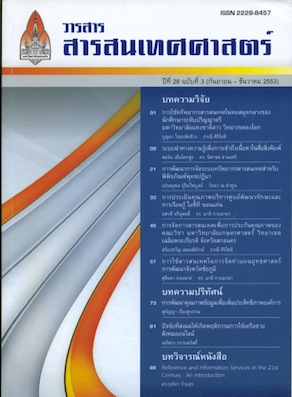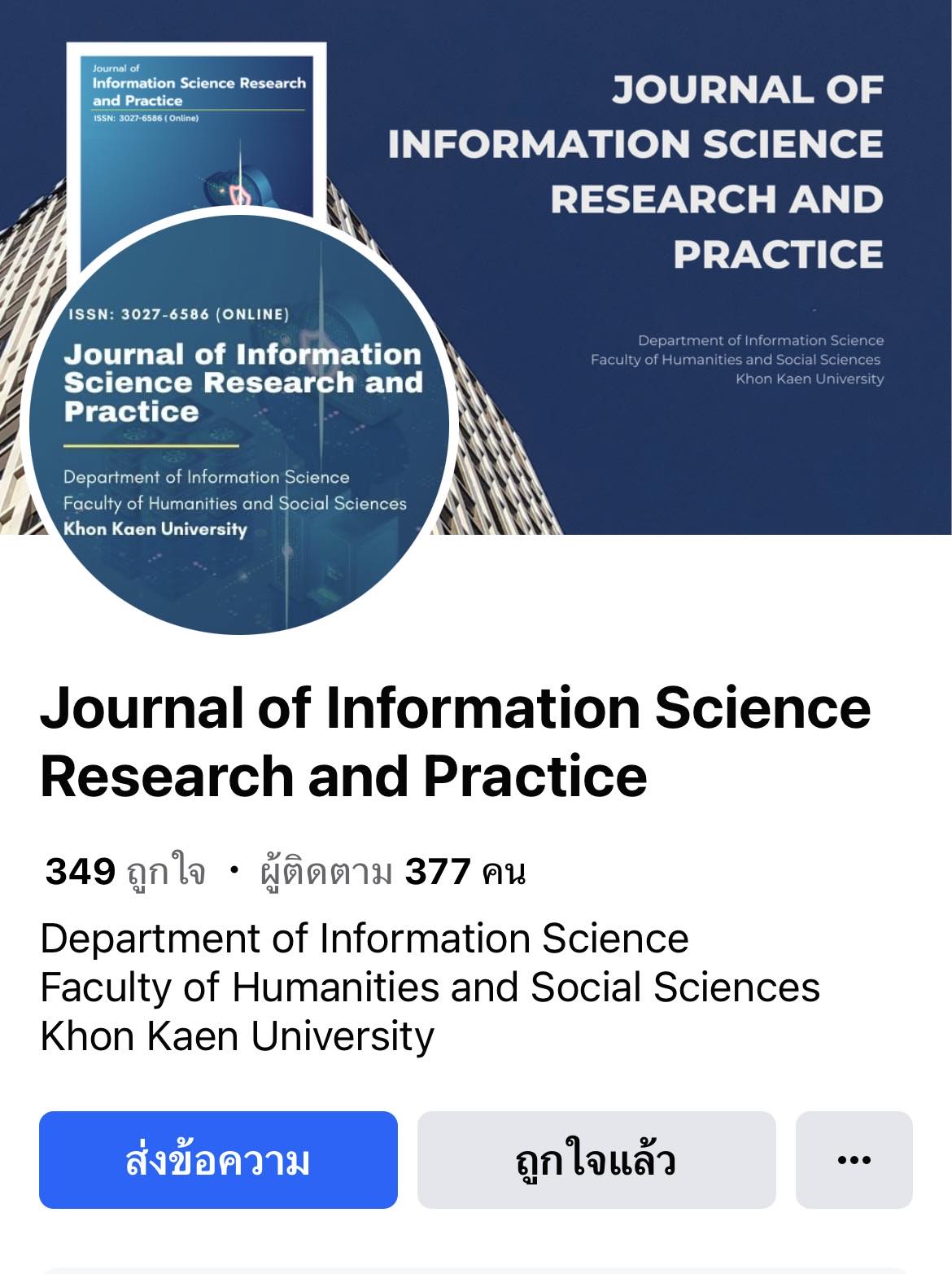ระบบนำทางความรู้เพื่อการเข้าถึงเนื้อหาในสื่อสิ่งพิมพ์
Keywords:
การนำทางความรู้, ระบบนำทางความรู้, แบบจำลองการค้นคืนสารสนเทศ, เทคนิคเอ็นแกรมแบบจำลองปริภูมิเวกเตอร์, การสืบค้นสารสนเทศ, Knowledge navigation, Knowledge navigation system, Information retrieval model, N-gram technique, Vector space mode, Information retrievalAbstract
บทคัดย่อ
งานวิจัยนี้มีวัตถุประสงค์เพื่อออกแบบและพัฒนากระบวนการและระบบนำทางความรู้ และประเมินประสิทธิภาพของระบบนำทางความรู้เพื่อการเข้าถึงเนื้อหาในทรัพยากรสารสนเทศประเภทสื่อสิ่งพิมพ์ โดยใช้แหล่งข้อมูลจากรายการสารบัญและดรรชนีท้ายเล่มของสื่อสิ่งพิมพ์เป็นตัวแทนของประเด็นเนื้อหา ประยุกต์ใช้เทคนิคเอ็นแกรมและแบบจำลองปริภูมิเวกเตอร์สเปซโมเดลเพื่อสืบค้นข้อคำถามในโมดูลการสืบค้น ใช้โครงสร้างกราฟเอ็มแอลนำเสนอและเชื่อมโยงผลการค้น ผลการวิจัย พบว่า ระบบที่พัฒนาขึ้นมีประสิทธิภาพในการนำทางความรู้โดยมีค่าความแม่นยำเฉลี่ยที่ 0.81 ค่าความระลึกเฉลี่ยที่ 0.64 และค่าเอฟเมเชอร์เฉลี่ยที่ 0.71 การประเมินระดับความพึงพอใจของผู้ใช้งานที่มีต่อระบบ พบว่า โดยภาพรวมผู้ใช้มีความพึงพอใจต่อระบบในระดับมาก ที่ค่าเฉลี่ยที่3.72 โดยด้านประโยชน์ในการส่งเสริมการเรียนรู้และด้านคุณภาพความรู้และสารสนเทศที่ได้รับผู้ใช้มีความพึงพอใจระดับมาก ส่วนด้านสมรรถนะในการให้บริการของระบบผู้ใช้งานมีความพึงพอใจในระดับปานกลาง
คำสำคัญ: การนำทางความรู้; ระบบนำทางความรู้; แบบจำลองการค้นคืนสารสนเทศ; เทคนิคเอ็นแกรมแบบจำลองปริภูมิเวกเตอร์; การสืบค้นสารสนเทศ
Abstract
The purposes of this research were to design, develop and evaluate the efficiency of a knowledgenavigation process and system for accessing contents in printed materials. This study used table of contentsand book indexes as the resources of content representation, applied a n-gram technique and a vectorspace model to query in search module, and used GraphML structure to present and link between thesearch results. The results of this research found that the developed system has an efficiency in knowledgenavigation, the average of precision is 0.81, recall is 0.64 and F-measure is 0.71. The evaluation ofuser satisfaction found that, over all users satisfy with the system at high level, average was 3.72. Thedimensions of “The useful of learning support” and “The quality of knowledge and information” were ratedat high level while “The performance of system service” was rated at moderate.
Keywords: Knowledge navigation; Knowledge navigation system; Information retrieval model; N-gram technique; Vector space mode; Information retrieval






